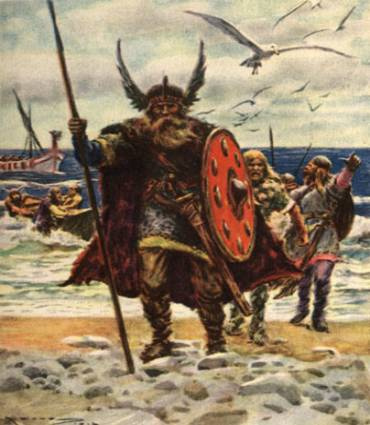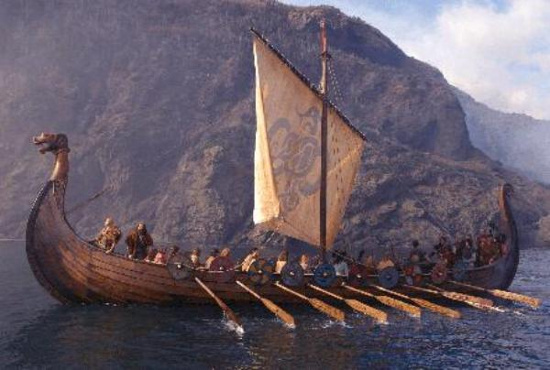Mouse house - The Viking's special companion
During the period between the 8th and 10th centuries, Vikings explored and expanded to the areas of Greenland, Iceland and Newfoundland. A recent study shows these brutal notorious people bring with them some 'goers ': home mice.
According to a genetic analysis of this small animal, the Vikings seem to have brought home mice when they arrived in Iceland and Greenland. The descendants of these Viking-era mice are still found in Iceland, although Greenland mice are extinct and replaced by Danish "cousins" . Experts Eleanor Jones of York University (UK) and Uppsala University (Sweden) for the report : 'The history of human settlements in the last 1,000 years is reflected in the genetic mitochondrial DNA sequence of mice. We can arrange a model of human population corresponding to the model of the house mouse. '

The Vikings scattered rats everywhere.
From the end of the 8th century to the 10th century, Vikings established colonies in Scotland, the islands of Scotland, Ireland, Isle of Man, until the Faroe Islands, Iceland, Greenland, Newfoundland. Like many adventurers, the Vikings brought cattle in their conquests. During such trips, having 'stowaway' guests is unavoidable. The team, which brings together experts from Iceland, Denmark and the United States, has conducted modern mouse genetic testing in Iceland, Greenland and Newfoundland lands, which are thought to be discovered by Vikings. They also tested the ancient pieces of bone rats found at archaeological sites in Greenland and Iceland.

Jones and colleagues found that the subspecies of the hamster Mus musculus domesticus appeared in Iceland from Norway or the British archipelago in the 10th century, in line with the Viking era. From there, the Vikings and their mice went to Greenland. Today, descendants of Viking mice are still present in Iceland. But for reasons that cannot be determined, mice Mus musculus domesticus were then extinct in Greenland. Today, Greenland rats are Mus musculus muscularis, a subspecies that may come from Denmark in the expeditions after 1500, or later after the Nordic nation invaded Greenland in the 1700s.

Researchers found no Viking mouse evidence in Newfoundland, although there may be a Viking settlement there in the year 1,000. According to the report published in the latest issue of BMC Evolutionary Biology, the experts believe that the Vikings may accidentally bring the mouse to the area, but they have become extinct when they continue their conquest, in when the native Aboriginal settlement model does not provide rats with suitable habitats. Rats in Newfoundland today are a subspecies that have spread throughout the world during the 1700s on British sailboats.
- The Viking's companion
- How did the mouse break into the house through the toilet?
- Three-story house collapsed in an instant because the raging rats
- Entertainment of the Vikings: To ski is also the most bloody history
- Discover a mysterious companion star
- The Viking predicts 'Apocalypse' will score on February 22, 2014
- The mouse smells like a stereo
- Detecting a companion system of three stars
- The mouse - the 'dear' companion of humans
- The house made from newspaper does not rot after hundreds of years
- Dutch teenager turns mouse into a plane
- The user's emotional intelligence system through the use of mouse
 'Fine laughs' - Scary and painful torture in ancient times
'Fine laughs' - Scary and painful torture in ancient times The sequence of numbers 142857 of the Egyptian pyramids is known as the strangest number in the world - Why?
The sequence of numbers 142857 of the Egyptian pyramids is known as the strangest number in the world - Why? History of the iron
History of the iron What is alum?
What is alum?